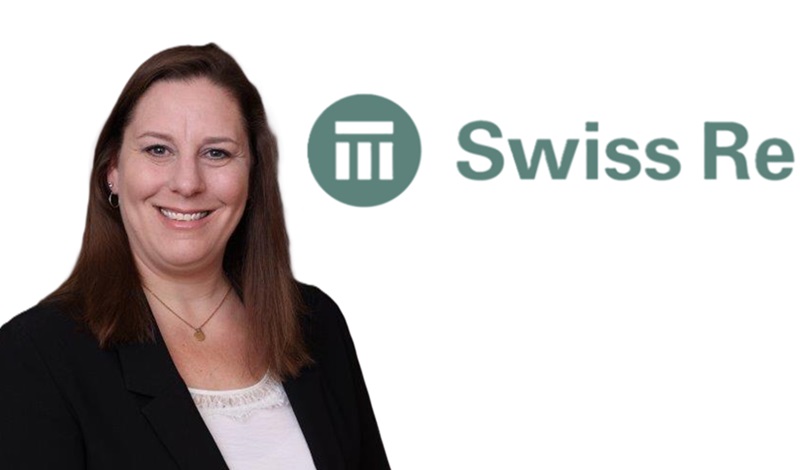
Parametric insurance is becoming more mainstream and has become a great tool to complement traditional insurance as the potential devastating impacts of hazards such as earthquakes increase, Megan Linkin commented in a recent interview with Reinsurance News.
 Findings from the USGS’s latest National Seismic Hazard Model (NSHM) revealed that there is a higher probability of earthquake-related ground shaking along the East and West coasts compared to the last NSHM update issued in 2018 .
Findings from the USGS’s latest National Seismic Hazard Model (NSHM) revealed that there is a higher probability of earthquake-related ground shaking along the East and West coasts compared to the last NSHM update issued in 2018 .
In the United States, the question is not “if,” but “when” a major earthquake will occur. And insurers are preparing to support their customers after the event by providing “effective financial protection tools” such as parametric insurance.
Senior Parametric Nat Cat Structurer, Swiss Re Corporate Solutions, said: “The USGS has revealed that there is an increased risk of an earthquake affecting major cities along the East Coast, from Washington to Baltimore to Philadelphia to New York to Boston. But to put that in context, the risk has gone from very low to maybe a little bit lower. The West Coast continues to be at the highest risk of earthquakes in the US.
“For example, an earthquake in San Francisco or Los Angeles would have significant consequences not only for the populations, businesses, corporations and governments located in those nearby cities, but also for the entire, or possibly the entire, U.S. economy.” . San Francisco is a key technology hub and the ports of Los Angeles are key to the supply chain.

“California has a number of large faults, and although they haven’t produced a major earthquake in a while, it’s not really a question of ‘if’, it’s a question of ‘when.’ So parametric insurance can help supplement any existing insurance coverage that a corporate or government has.
Parametric insurance uses the characteristics of the underlying event to determine whether a payout is due. In the case of an earthquake, the earthquake-related ground shaking, or earthquake magnitude, is used, and information about earthquake characteristics comes directly from the United States Geological Survey, the government agency responsible for monitoring earthquake activity, Linkin explained.
She continued: “There are many benefits to this approach. First, the use of funds is very flexible. It doesn’t necessarily have to do with a specific structure or asset being damaged, and that damage exceeds the deductible for the buyer to receive a payout. All they have to do is confirm that they have losses from this earthquake.
“It is also very transparent because the insured and the insurer are not the ones coming up with any numbers or intensities to determine if the product is paid out. It is carried out completely independently and by a reputable scientific agency.
“Number three, it’s very fast. Proceeds from all parametric insurance claims we have received are settled within 30 days in North America. Funds according to the terms and conditions of the parametric insurance policy will be delivered almost weeks after the occurrence of the event.
According to Linkedin, all of these features help launch recovery and address potential non-physical damage and business disruption, as well as emergency recovery efforts.
Interest in parametric solutions has grown in recent years and has become more relevant after catastrophic events such as Hurricane Ian have shown the gaps in insurance that governments and corporations need to cover.
Linkin noted: “There has been a hardening of the traditional property market, which has meant that some buyers are looking to get additional capacity and, even worse, that they have previously been able to secure from the property market and are looking for alternative ways to do this .
“When the hurricanes hit the US in 2020, 2021, 2022 and even in 2023 when Hurricane Idalia made landfall, it really opened the eyes of many corporations and governments to what their uninsured exposure was or could be. be their potential uninsured exposure. Losses that simply wouldn’t have been covered under their traditional policy led them to look for options that could bridge those gaps and coverage; and parametric insurance fits these gaps quite well.
Linkin also emphasized that parametric products have not only become more mainstream, but that there is proof of concept that they work successfully.
The CEO concluded: “There is evidence that parametric solutions work. There is an improvement in the data available for the settlement of parametric insurance transactions. The improvement in basic science observational data has really enabled and expanded the field of parametric insurance, and I can only foresee it continuing to do so in the years to come.
“Parametric solutions are becoming more mainstream. Previously, they were very niche, being used by specific customer segments, such as government customers or energy companies. But now they are becoming more widely accepted by all insurers who are involved in the commercial market space.”

